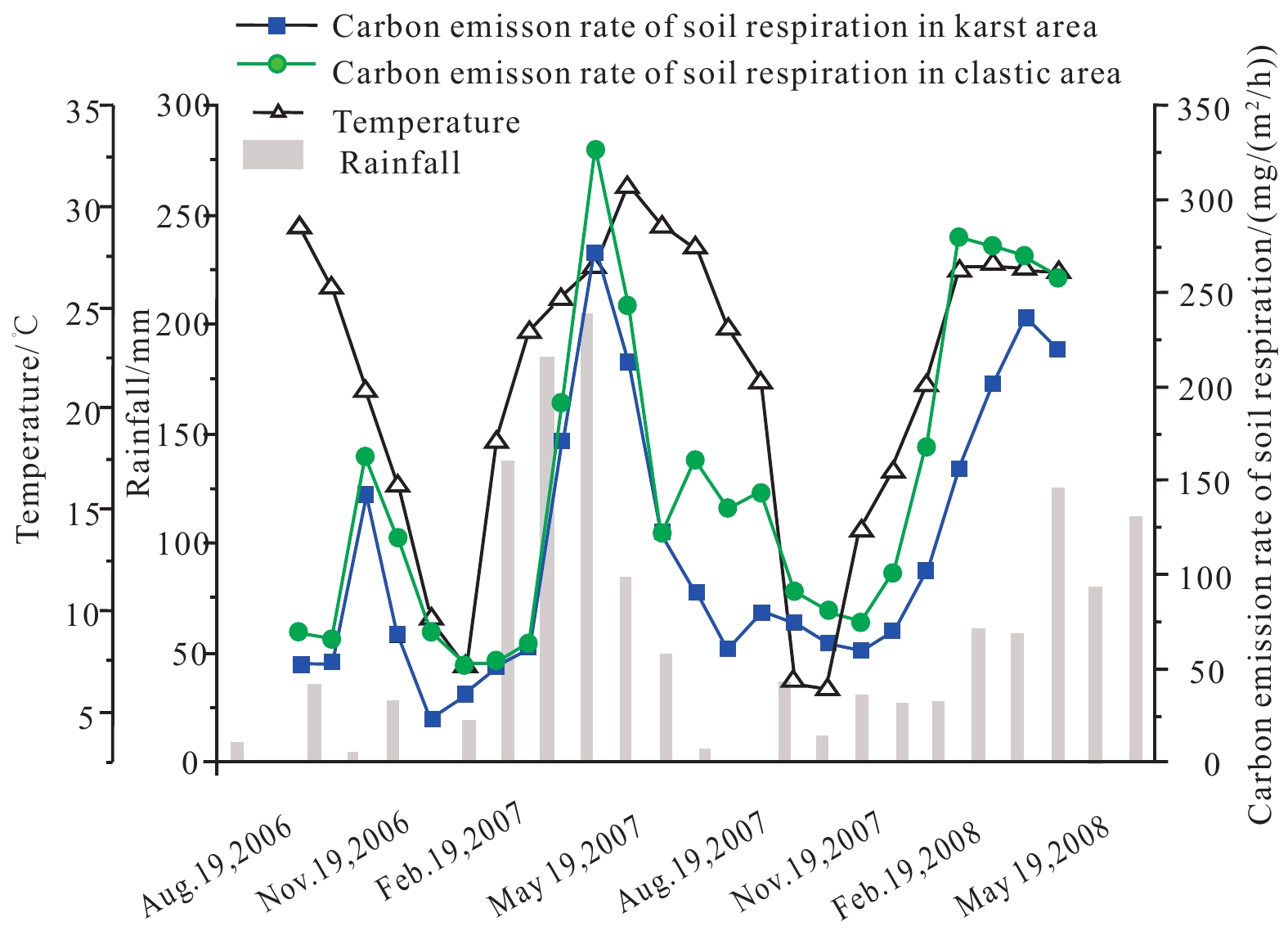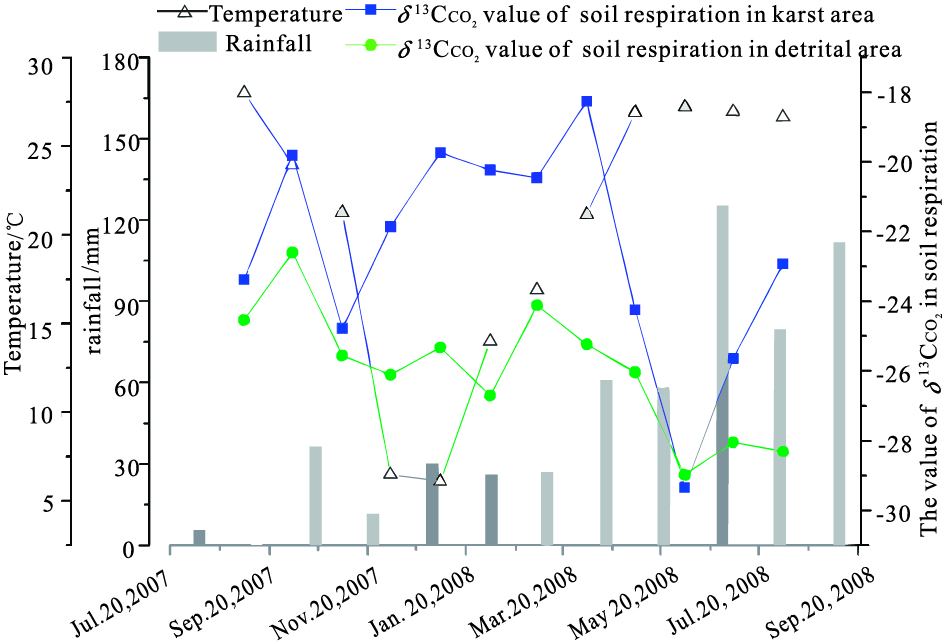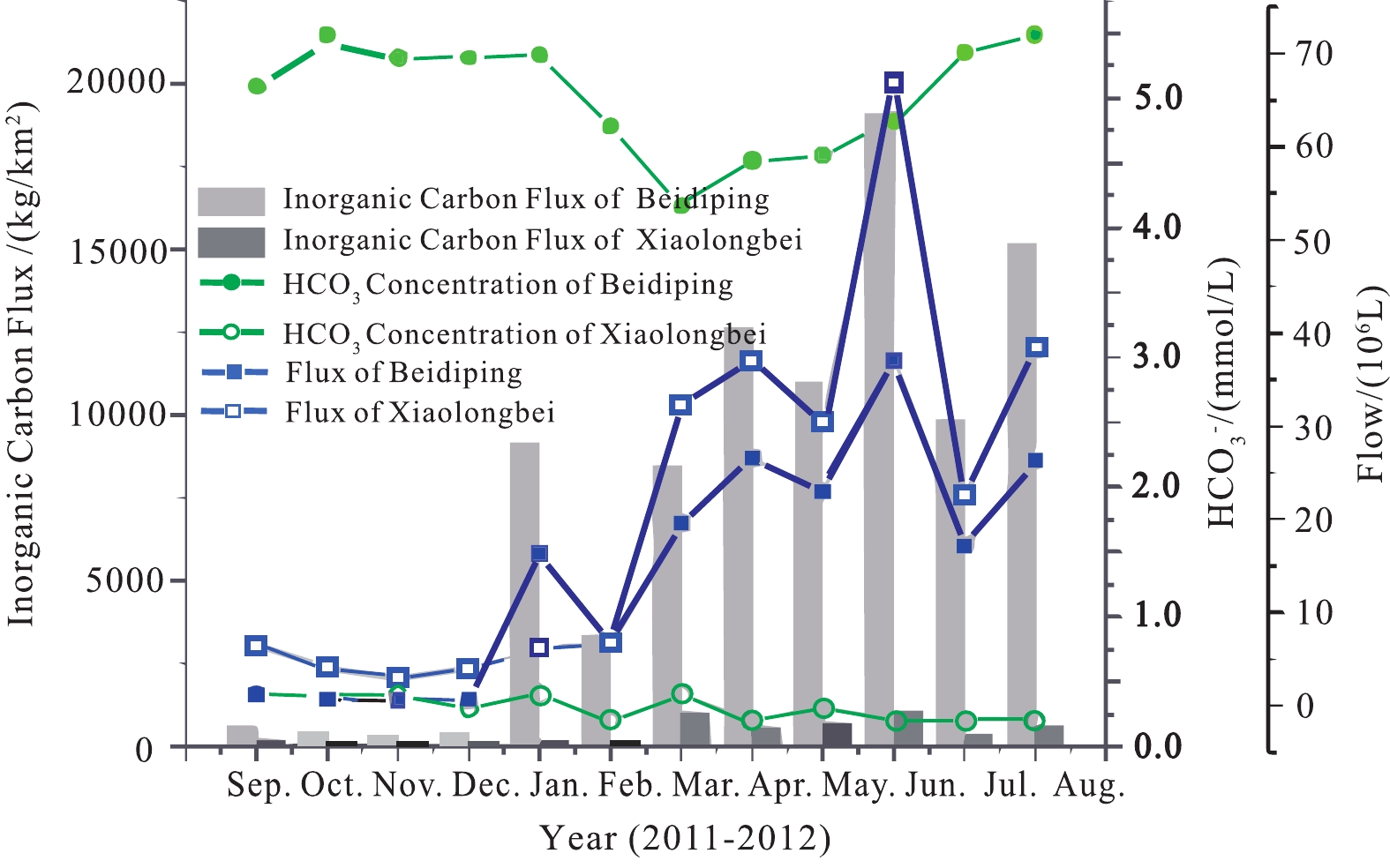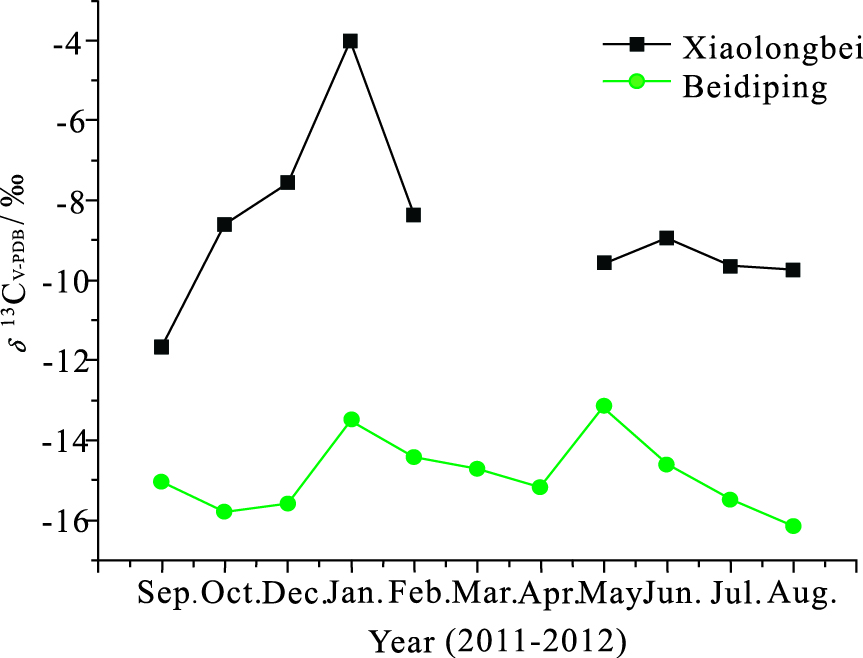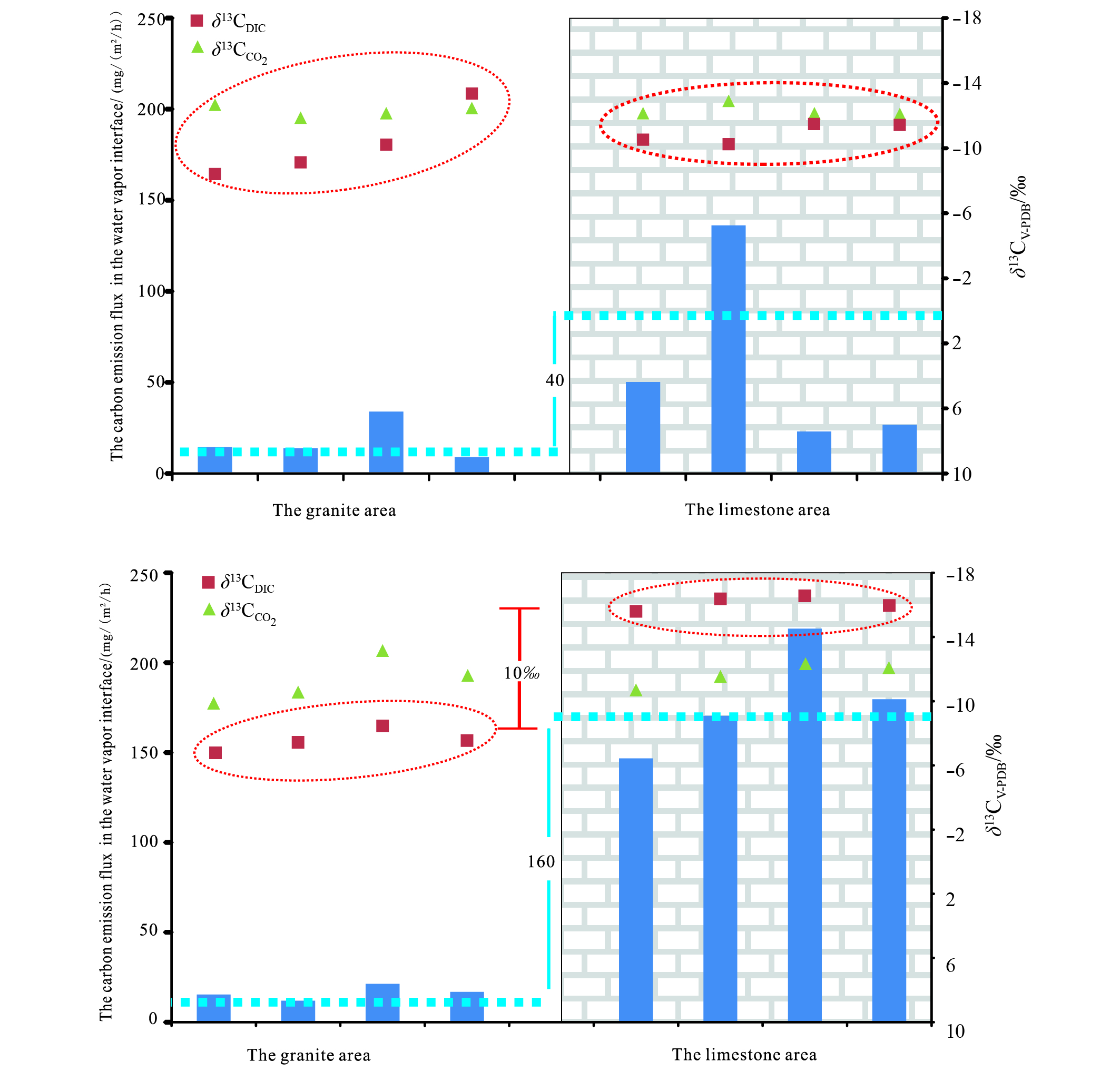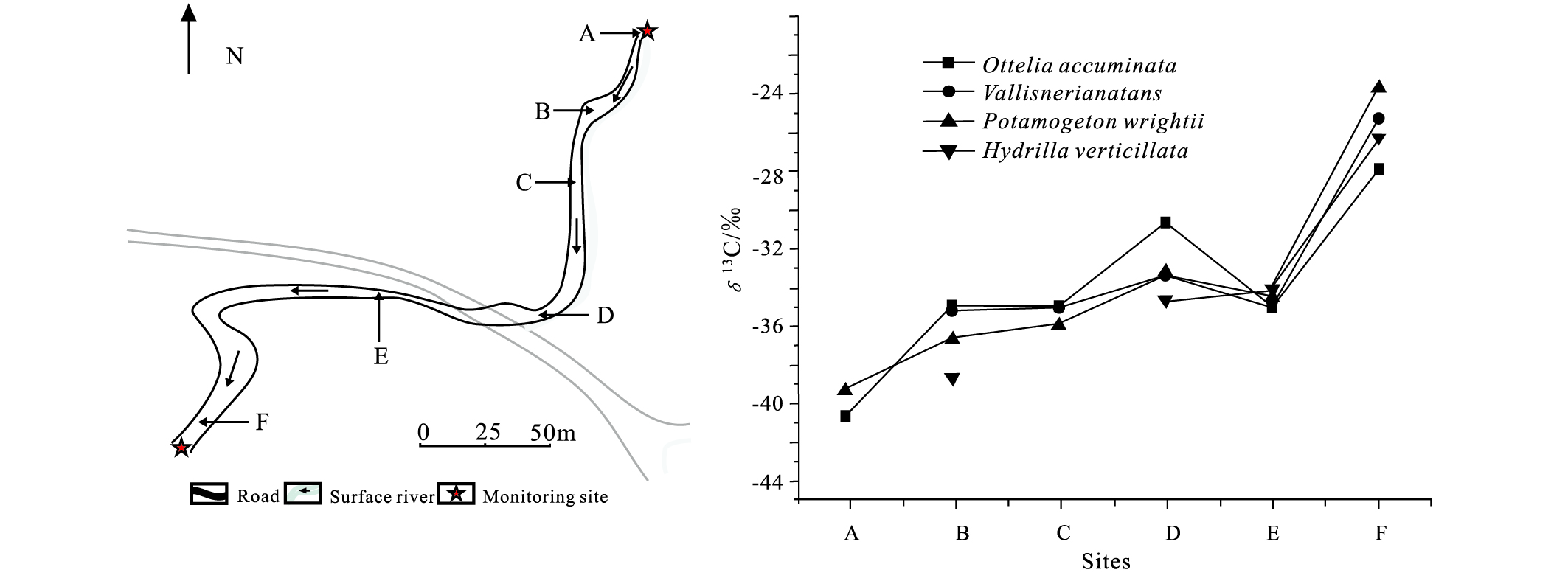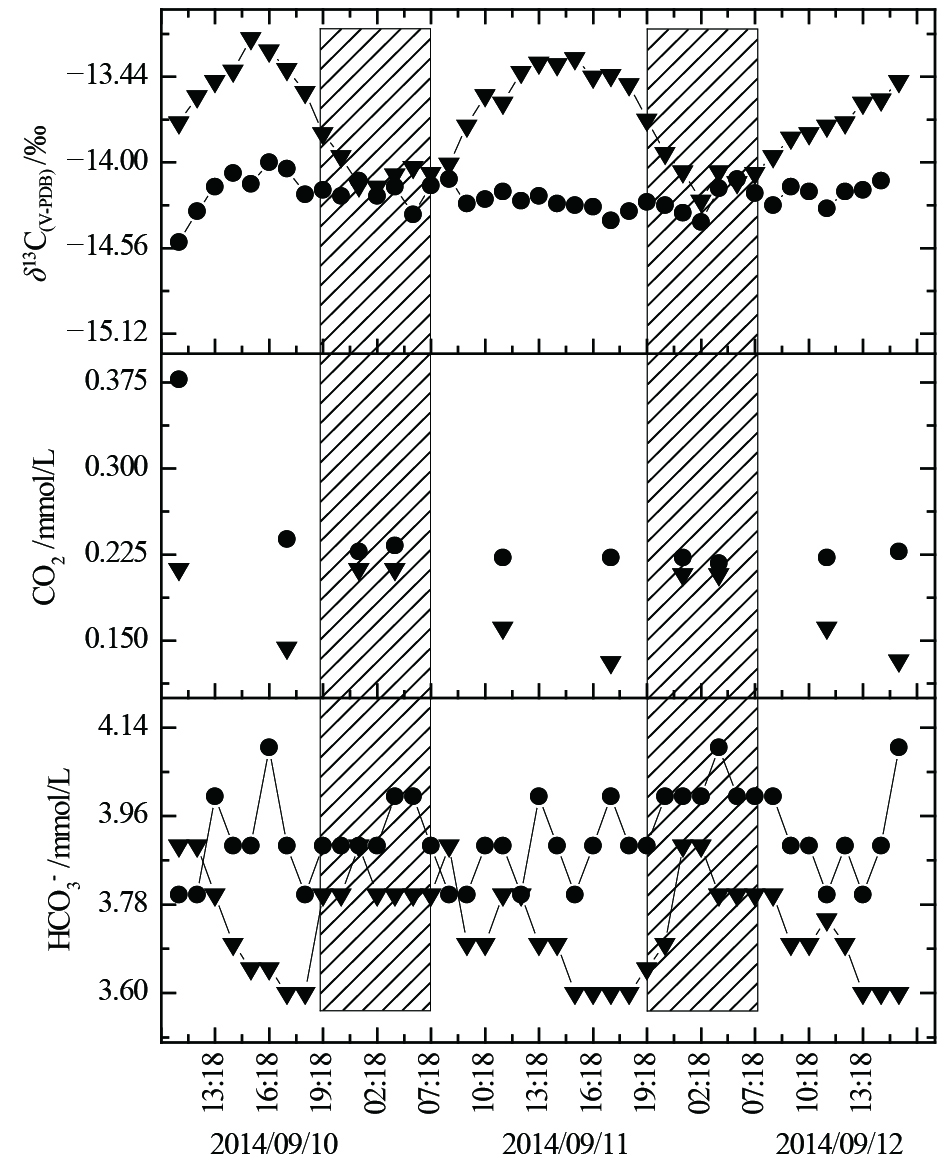| Citation: | Jian-hua Cao, Xia Wu, Fen Huang, Bill Hu, Chris Groves, Hui Yang, Chun-lai Zhang, 2018. Global significance of the carbon cycle in the karst dynamic system: evidence from geological and ecological processes, China Geology, 1, 17-27. doi: 10.31035/cg2018004 |
Global significance of the carbon cycle in the karst dynamic system: evidence from geological and ecological processes
-
Abstract
On the basis of proposing the existence of a karst carbon cycle and carbon sink at a watershed scale, this paper provides four pieces of evidence for the integration of geology and ecology during the carbon cycle processes in the karst dynamic system, and estimated the karst carbon sink effect using the methods of comparative monitoring of paired watersheds and the carbon stable isotope tracer technique. The results of the soil carbon cycle in Maocun, Guilin, showed that the soil carbon cycle in the karst area, the weathering and dissolution of carbonate rocks under the soil, resulted in a lower soil respiration of 25% in the karst area than in a non-karst area (sandstone and shale), and the carbon isotope results indicated that 13.46% of the heavy carbon of the limestone is involved in the soil carbon cycle. The comparative monitoring results in paired watersheds, suggesting that the HCO3- concentration in a karst spring is 10 times that of a rivulet in a non-karst area, while the concentration of inorganic carbon flux is 23.8 times. With both chemical stoichiometry and carbon stable isotopes, the proportion of carbon in karst springs derived from carbonate rocks was found to be 58.52% and 37.65% respectively. The comparison on carbon exchange and isotopes at the water-gas interface between the granite and carbonate rock basins in the Li River showed that the CO2 emission of the karst water is 10.92 times that of the allogenic water from the non-karst area, while the carbon isotope of HCO3- in karst water is lighter by 8.62‰. However, this does not mean that the karst water body has a larger carbon source effect. On the contrary, it means the karst water body has a greater karst carbon sink effect. When the karst subterranean stream in Zhaidi, Guilin, is exposed at the surface, carbon-rich karst water stimulated the growth of aquatic plants. The values of carbon stable isotopes in the same species of submerged plants gradually becomes heavier and heavier, and the 512 m flow process has a maximum range of 15.46‰. The calculation results showed that 12.52% of inorganic carbon is converted into organic carbon. According to the data that has been published, the global karst carbon sink flux was estimated to be 0.53-0.58 PgC/a, equivalent to 31.18%-34.41% of the global forest carbon sink flux. In the meanwhile, the karst carbon sink flux in China was calculated to be 0.051 PgC/a, accounting for 68% of its forest carbon sink flux.
-
Keywords:
- karst carbon cycle /
- carbon stable isotope /
- carbon sink effect /
- submerged plants /
- Guilin
-

-
References
[1] Butman D, Raymond PA. 2011. Significant efflux of carbon dioxide from streams and rivers in the United States. Nature Geoscience, 4(12), 839-842. [2] Cao JH, Hu B, Groves C, Huang Fen, Yang Hui, Zhang CL. 2016. Karst dynamic system and the carboncycle. Zeitschrift für Geomorphologie, 60(2), 35-55. [3] Cao JH, Zhou Li, Yang H, Lu Q, Kang ZQ. 2011. Comparison of carbon transfer between forest soils in karst and clasolite areas and the karst carbon sink effect in Maocun village of Guilin. Quaternary Sciences , 31(3), 431-437 (in Chinese with English abstract). [4] Cao JH, Yuan DX, Groves C, Huang F, Yang H, Lu Q. 2012. Carbon fluxes and sinks, the consumption of atmospheric and soil CO2 by carbonate rock dissolution. Acta Geologica Sinica, 86(4), 963-972. [5] Calvin M, Massini P, Berkeley C. 1952. The Path of Carbon in Photosynthesis. Experientia, 8(12), 445-484. [6] Ciais P, Tans PP, Trolier M, White JWC, Francey RJ. 1995a. A large northern hemisphere terrestrial CO2 sink indicated by the 13C/12C ratio of atmospheric CO2. Science, 269, 1098-1102. [7] Ciais P, Tans PP, Trolier M, White JWC, Francey RJ, Berry JA, Randall DR, Sellers PJ, Collatz JG, Schimel DS. 1995b Partitioning of ocean and land uptake of CO2 as inferred by δ13C measurements from the NOAA climate Monitoring and Diagnostics Laboratory Global Air Sampling Network. Journal of Geophysical Research, 100, 5051-5070. [8] Cole JJ, Prairie YT, Caraco NF, McDowell WH, Tranvik LJ, Striegl RG, Duarte CM, Kortelainen P, Downing J A, Middelburg JJ, Melack J. 2007. Plumbing the global carbon cycle, integrating inland waters into the terrestrial carbon budget. Ecosystems, 10, 171-184. [9] Craig H.1953.The geochemistry of the stable carbon isotope. Geochimica et Cosmochimica,3,53-92. [10] Curl RL. 2012. Carbon shifted but not sequestered. Science, 335, 655. [11] Dean WE, Gorham E. 1998. Magnitude and significance of carbon burial in lakes, reservoirs and peatlands. Geology, 26, 535-538. [12] Einsele G, Yan J, Hinderer M. 2001. Atmospheric carbon burial in modern lake basins and its significance for the global carbon budget. Global and Planetary Change, 30, 167-195. [13] Falkowski P, Scholes RJ, Boyle E, Canadell J, Canfield D, Elser J, Gruber N, Hibbard K, HÖgberg P, Linder S, Mackenzie F T, Moore B, Pedersen T, Rosenthal Y, Seitzinger S, Smetacek V, Steffen W. 2000. The global carbon cycle, a test of our knowledge of Earth as a system. Science, 290, 291-296. [14] Farquhar GD, Ehleringer JR, Hubick KT. 1989. Carbon isotope discrimination and photosynthesis. Annual Review of Plant Physiology and Plant Molecular Biology, 40, 503-537. [15] Farquhar GD, Richards RA. 1984. Isotopic composition of plant carbon correlations with water-use efficiency of wheat genotypes. Australian Journal of Plant Physiology, 11, 539-552. [16] Fang JY, Guo ZD, Piao SL, Cheng AP. 2007. Estimation of the carbon sink for China terrestrial vegetation during 1981-2000. Science in China (Series D-Earth Sciences), 37(6), 804-812. [17] Goldscheider N, Drew D. 2007. Methods in karst hydrogeology. Taylor & Francis. [18] Golubic S, Krumbein W, Schneider J. 1978. The carbon cycle. In, The Biology of Cyanobacteria (editors, Carr N G, Whitton B A). Blackwell Scientific Publications Ltd., 29-42. [19] Gombert P. 2002. Role of karstic dissolution in global carbon cycle. Global and Planetary Change, 33, 177-184. [20] Huang F, Zhang CL, Xie YC, Li L, Cao JH. 2015. Inorganic Carbon Flux and Source in the Karst Catchment in Maocun village of Guilin, China. Environmental Earth Sciences, 74, 1079-1089. [21] Jiang ZC, Jiang XZ, Lei MT. 2000. Estimation of atmospheric CO2 sink of karst areas in China based on GIS and limestone tablets loss data. Carsologica Sinica, 19(3), 212-217 (in Chinese with English abstract). [22] Kump LR, Brantley SL, Arthur MA. 2000. Chemical weathering, atmospheric CO2, and climate. Annual Review of Earth and Planetary Sciences, 28, 611-667. [23] Lal R. 2008. Carbon sequestration. Phil. Trans. Royal Soc. (B), 363(1492), 815-830. [24] Larson C. 2011. An unsung carbon sink. Science, 334(18), 886-887. [25] Li SL, Liu CQ, Tao FX, Lang YC, Han GL. 2004. Chemical and stable carbon isotopic compositions of the ground waters of Guiyang city, China, implications for biogeochemical cycle of carbon and contamination. Geochemica, 33(2), 165-170 (in Chinese with English Abstract). [26] Liu ZH, Dreybrodt W, Wang JL. 2007. Potential important CO2 sink due to global water cycle. Chinese Science Bulletin, 52, 2418-2422. [27] Liu ZH. 2000. Contribution of carbonate rock weathering to the atmospheric CO2 sink. Carsologica Sinica, 19(4), 293-300 (in Chinese with English abstract). [28] Mo Xue, Pu JB, Yuan DX, Zhang Cheng, He SY, Yu Shi, Liu Wen, Zhang Tao, Zhou JC, Yang Hui, Tang Wei. 2014. Diel variation and influence factors of dissolved inorganic carbon in a surface reek fed by a karst subterranean stream in subtropic area, SW China. Quaternary Sciences, 34(4), 873-880 (in Chinese with English Abstract). [29] Perrin AS, Probst A, Probst JL. 2008. Impact of nitrogenous fertilizers on carbonate dissolution in small agricultural catchments, Implications for weathering CO2 uptake at regional and global scales. Geochimica et Cosmochimica Acta, 72, 3105-3123. [30] Pu JB, Jiang ZC, Yuan DX, Zhang C. 2015. Some opinions on rock weathering related carbon sinks from the IPCC fifth assessment report. Advances in Earth Science, 30(10), 1081-1090 (in Chinese with English abstract). [31] Qiu DS, Zhuan DF, Hu YF, Yao R. 2004. Estimation of carbon sink from the rocks weathering in China. Earth Science, 29(2), 177-183 (in Chinese with English abstract). [32] Rafael M, Obrador B, Morguí J A, Riera J L, López P, Armengol J. 2015. Carbonate weathering as a driver of CO2 supersaturation in lakes. Nature Geoscience, 8, 107-111. [33] Suchet PA, Probst JL, Ludwig W. 2003. Worldwide distribution of continental rock lithology, Implications for the atmospheric/soil CO2 uptake by continental weathering and alkalinity river transport to the oceans. Global Biogeochemical Cycles, 17(2), 1038-1051. [34] Tranvik LJ, Downing JA, Cotner JB, Loiselle SA, Striegl RG, Ballatore TJ, Dillon P, Finlay K, Fortino K, Knoll LB, Kortelainen PL, Kutser T, Larsen S, Laurion I, Leech DM, McCallister SL, McKnight DM, Melack JM, Overholt E, Porter JA, Prairie Y, Renwick WH, Roland F, Sherman BS, Schindler DW, Sobek S, Tremblay A, Vanni MJ, Verschoor AM, Wachenfeldt EV, Weyhenmeyer GA. 2009. Lakes and reservoirs as regulators of carbon cycling and climate. Limnol. Oceanogr, 54, 2298-2314. [35] Wu ZB, Ma JM, He Feng, Cheng SP, Liang Wei. 2011. Macrophyte and aquatic ecological restoration. Science Press, 1-418 (in Chinese). [36] Wu WH, Zheng HB, Yang JD, Luo Chao, Zhou Bin. 2011. Chemical weathering of large river catchments in China and the global carbon cycle. Quaternary Sciences, 31(3), 397-407 (in Chinese with English abstract). [37] Wang P, Hu Gang, Cao JH. 2017. Stable carbon isotopic composition of submerged plants living in karst water and its eco-environmental importance. Aquatic Botany, 140, 78-83. [38] Yuan DX. 1993. Carbon cycle and global karst. Quaternary Sciences, 1, 1-6 (in Chinese with English abstract). [39] Yuan DX, Liu ZH, Lin YS, Song JF, He SY, Xu SY, Yang LZ, Li Bin, Qin JM, Cai WT. 2002. Karst Dynamic System China. Beijing, China Geological Publishing House, 1-275 (in Chinese). [40] Zhang C, Wang JL, Pu JB. 2015. Diel aqueous chemical cycling in a typical karst spring-fed stream, controls of biogeochemical processes. Acta Geoscientica Sinica, 36(2), 197-203 (in Chinese with English abstract). [41] Zhang T, Li JH, Pu JB, Wu FH, Li Li, Yuan DX. 2017. Spatial variations of CO2 degassing across water-air interface and its impact factors in summer in Guijiang River, China. Environmental Science, 38(7), 2773-2783(in Chinese with English abstract). [42] Zhao M, Zeng C, Liu ZH. 2009. Influence of land use change on dissolved inorganic carbon and stable isotopic compositions of karst groundwater. Geochemica, 38(6), 565-572(in Chinese with English abstract). -
Access History

-
Figure 1.
Conceptual diagram of carbon cycle in karst watershed ( after Cao JH et al., 2016).
-
Figure 2.
Comparison of soil respiration change between limestone soil and red soil, Maocun, Guilin ( after Cao JH et al., 2011).
-
Figure 3.
Comparison of the δ13C value from soil respiration between the limestone soil and red loam, Maocun, Guilin (after Cao JH et al., 2011).
-
Figure 4.
Comparison of inorganic carbon concentration and flux between karst water in Beidiping and the allogenic water of the silicate rivulet in Xiaolongbei, Maocun, Guilin.
-
Figure 5.
Comparison of inorganic carbon isotopes between the karst spring water in Beidiping and the allogenic water in Xiaolongbei.
-
Figure 6.
Ratio of inorganic carbon sources in karst spring water.
-
Figure 7.
Map of karst distribution, monitoring sites and sampling sites in the Li River basin.
-
Figure 8.
Comparison of the CO2 flux at the water-air interface, carbon stable isotopes of water, emitted CO2 between the allogenic and karst water in the Li River basin.
-
Figure 9.
Sketch of Zhaidi stream and changes of the stable carbon isotope of 4 dominant submerged plants’ leaves along the stream, Guilin, China (after Wang P et al., 2017).
-
Figure 10.
Diurnal variation of HCO3-, CO2, and δ13CDIC values in water at both monitoring sites (site A and site F. The shaded box shows the night time)(after Wang P et al., 2017).

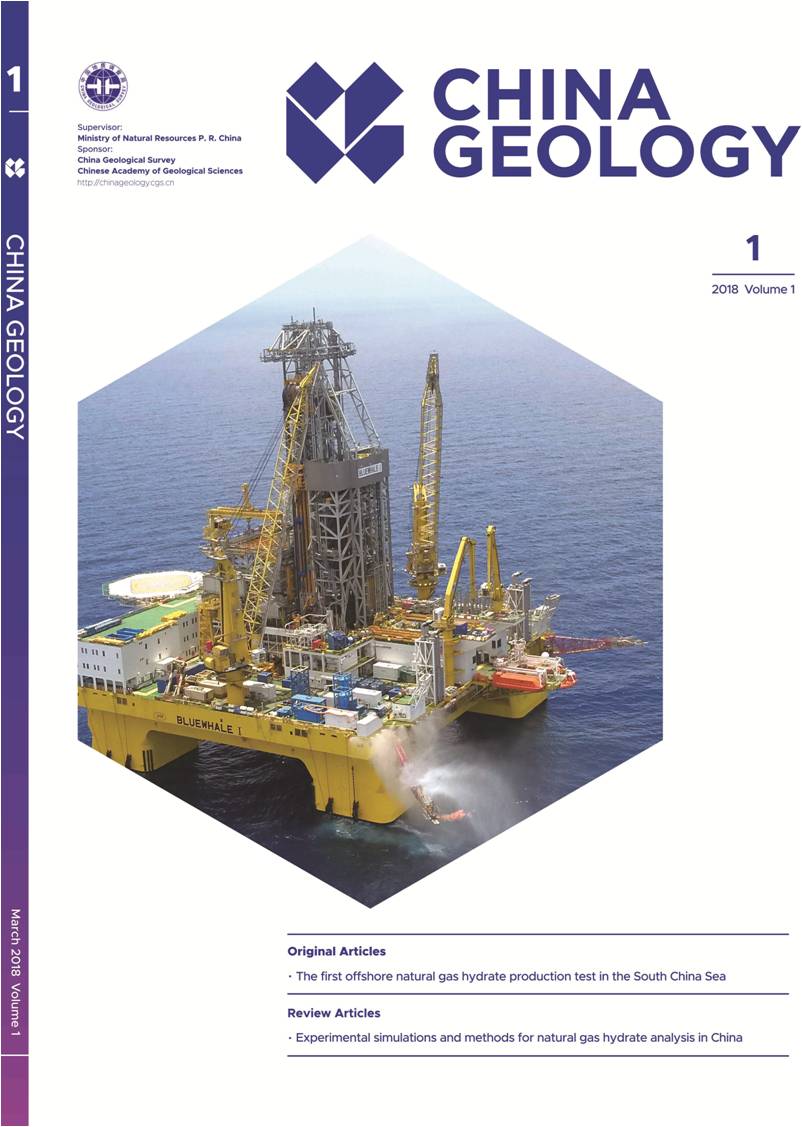

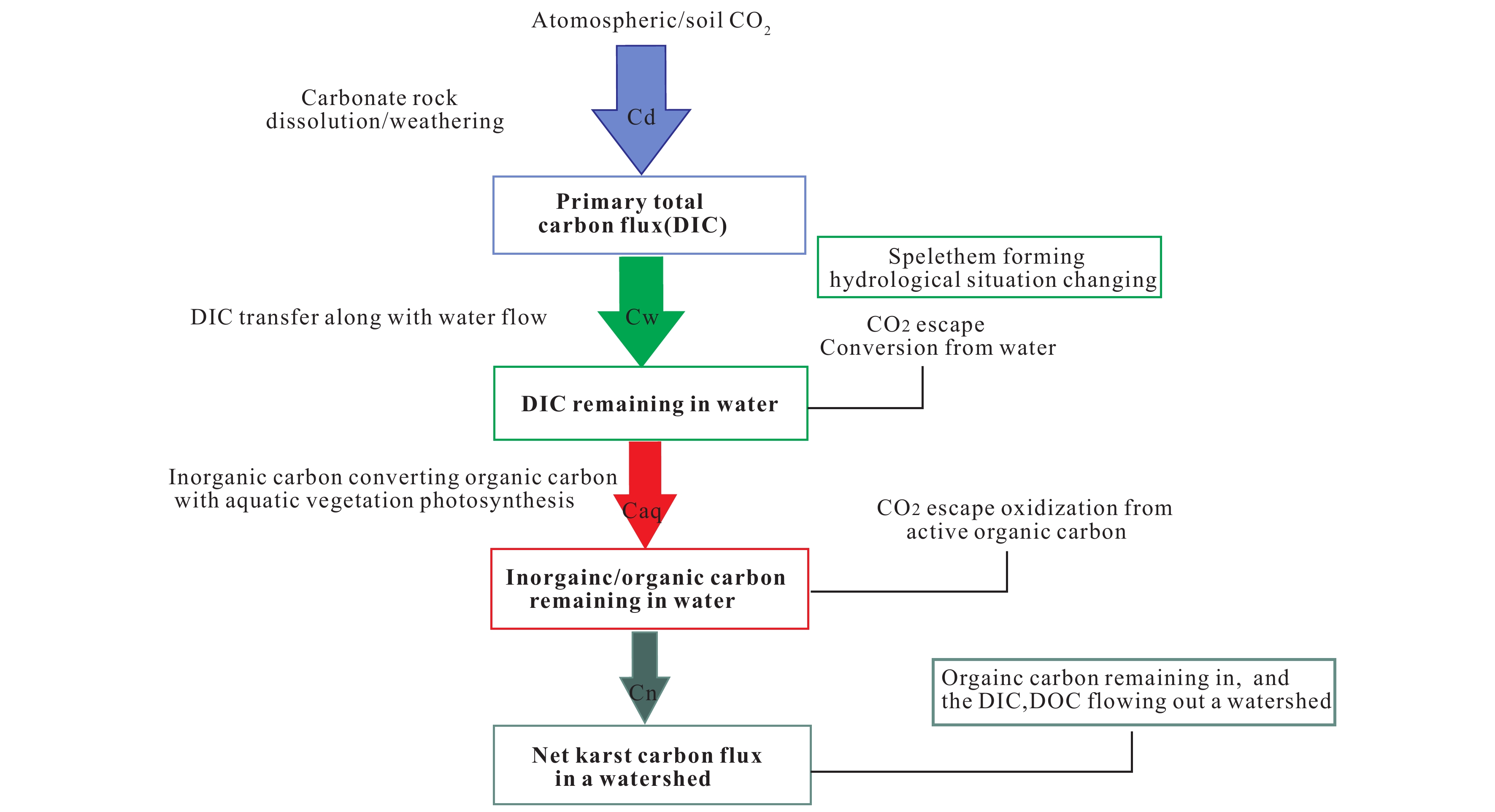

 DownLoad:
DownLoad:
